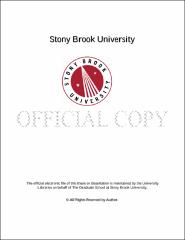| dcterms.abstract | Glycosylation is the modification of a target molecule with carbohydrate. It is a common and complex co- or post-translational protein modification that is responsible for diverse and essential biological roles including cellular communication, modulation of function, and the provision of specific ligands for carbohydrate-binding proteins. Fucosylation is a specific type of glycosylation that results from the transfer of fucose, a unique monosaccharide with the L-configuration, to its target proteins or glycans through the action of fucosyltransferases. Thirteen fucosyltransferases have been identified, including protein O-fucosyltransferases 1 and 2 (POFUT1 and POFUT2), responsible for addition of fucose to the hydroxyl group of serine or threonine residues within specific sequences of Epidermal Growth Factor-like (EGF) repeats and Thrombospondin-1 Type Repeats (TSRs) in proteins, respectively, as well as Fucosyltransferase 8 (FUT8), the fucosyltransferase responsible for the addition of fucose to the core N-acetylglucosamine on complex-type N-linked glycans. Unlike protein synthesis, glycosylation is not template driven. The resulting glycosylated proteins can be quite complicated, and robust tools are needed to analyze their structures and biology. The use of sugar analogs has revolutionized the study of glycosylation. Modified forms of naturally occurring sugars synthesized with an artificial functional group, which can be incorporated and metabolized by cells to reach their end-target proteins, glycans, or lipids. The functional group then allows for probing, visualizing, or potentially purifying the end-target molecules modified with the sugar analog. In this dissertation, I first studied the properties of 6-alkynylfucose (6AF), a fucose analog with an alkyne functional group in the C6 position, and its in vivo incorporation into glycoproteins expressed in Human Embyronic Kidney 293T (HEK293T) cells. I directly tracked the 6AF by mass spectrometry, taking advantage of the added mass of the alkyne functional group to distinguish 6AF from fucose. Additionally, I utilized the alkyne by reacting it with biotin-azide using the copper-catalyzed azide-alkyne cycloaddition or " click" reaction. Addition of biotin to glycoproteins which incorporated 6AF allowed direct detection using streptavidin probes by Western blot. Using these methods I concluded that 6AF was efficiently incorporated onto EGF repeats and TSRs by POFUT1 and POFUT2, respectively, in a " bioorthogonal" or minimally perturbing manner. I then attempted to use 6AF as part of a proteomics protocol to metabolically label HEK293T cells, carrying out the " click" reaction to biotinylate all fucosylated proteins for purification with streptavidin beads and subsequent identification. While I was able to carry out " proof-of-concepts" experiments where I was able to pulldown and identify overexpressed proteins containing EGF repeats or TSRs known to be fucosylated, I was unable to use the protocol to identify any endogenously expressed fucosylated proteins from HEK293T cells primarily due to their low abundance. During the initial the 6AF experiments described above, I noticed that 6AF was poorly incorporated into N-linked glycans. Using human Immunoglobulin G (IgG) heavy chain, which has a single N-linked glycan known to be efficiently core fucosylated by FUT8, I confirmed that 6AF inhibits core fucosylation. This result suggests that in contrast to the results above for POFUT1 and POFUT2, 6AF is not a substrate but an inhibitor of FUT8. Since inhibitors of fucosyltransferases are valuable as potential therapeutics, I then examined whether two other fucose analogs (5-thiofucose (5TF) and 2-fluorofucose (2FF)) are substrates or inhibitors of POFUT1, POFUT2, and FUT8. All three fucose analogs were at least partially incorporated as substrates by POFUT1 and POFUT2 onto EGF repeats and TSRs. Additionally, however, a mild decrease in overall fucosylation was also observed on these targets, suggesting that all three fucose analogs had simultaneous inhibitory properties on POFUT1 and POFUT2. Only trace amounts of all three fucose analogs were incorporated as substrates by FUT8 on IgG. Moreover, 6AF caused a profound decrease in core fucosylation of IgG, confirming its role as a potent inhibitor of FUT8. A smaller decrease in core fucosylation of IgG observed for 5TF and 2FF, suggesting that these fucose analogs are also inhibitors of FUT8, but less potent than 6AF. | |

